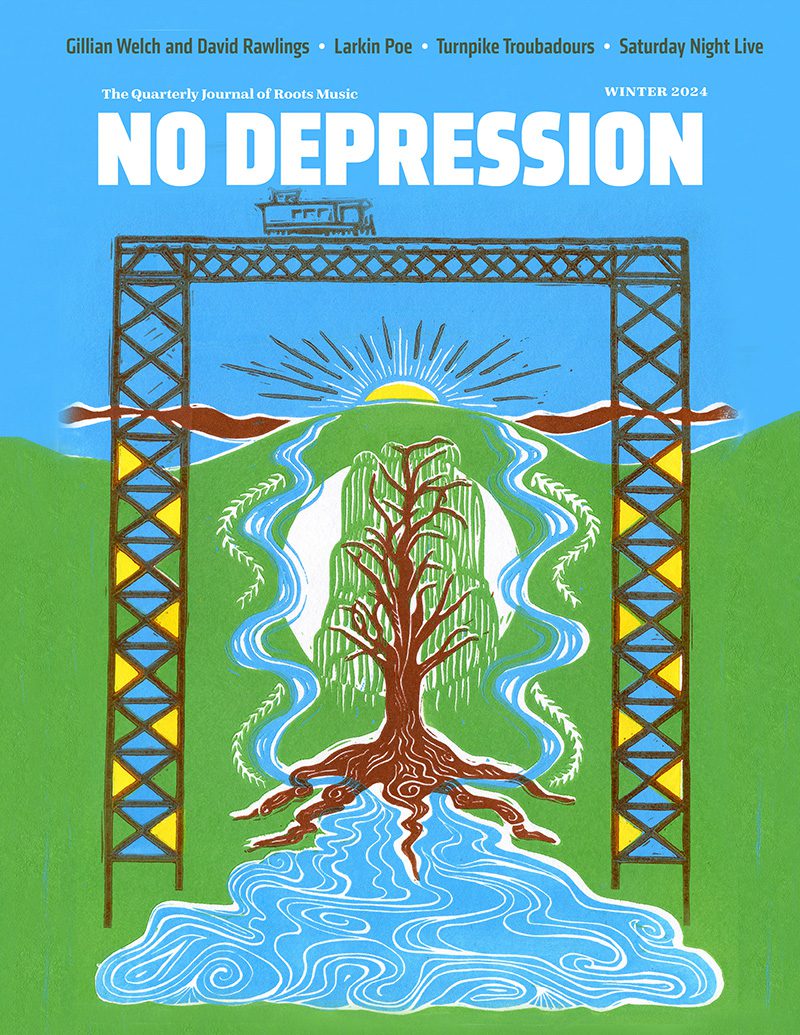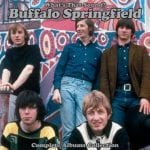Buffalo Springfield – Buffalo Springfield
Powered by a strange and ultimately corrosive mix of Californian and Canadian talents, Buffalo Springfield were an engine of ambition, all heady combustion and overreaching, a grand stylistic philander of well-schooled popcraft and overweened egos that produced a few great singles, one album-length masterpiece, and much to answer for.
The influence their renovations of folk and country forms have exerted on American pop in the past three decades has been pervasive, for better and worse. Buffalo Springfield proffered an ideal of musical confluence as expansive as any of its era, adapting a broad cross-section of styles through ambitious experimentation, insisting on their essential unity of origin and purpose.
Their collective approach took due note of folk purists, “blues-is-blood” true believers, honky-tonk sentimentalists and all stripes of manic rock ‘n’ rollers as evidence of a single exceptional intelligence, and made hard proof of it. That other results amounted to stilted hippie triumphalism or soft-headed mewling was the consequence of immersion in an increasingly unhinged youth culture which refused to recognize the possibility of its own bad conscience.
They’d come together as a result of Neil Young and bassist Bruce Palmer convincing ex-Dillards drummer Dewey Martin to join them in relocating from Western Ontario to Los Angeles in early 1966, where they connected with Richie Furay and Stephen Stills (the latter recently rebounded from an unsuccessful audition for the Monkees) and began making the rounds of the city’s burgeoning music clubs.
All accounts of their early gigs reveal a common predisposition to amphetamine-driven folk-rock and the bluster of Stones-inspired R&B, showcasing a three-guitar front that allowed both Stills and Young to exercise their skills as vigorous soloists. They were signed to Atlantic in a matter of weeks, the result of record-company frenzy in the wake of the Byrds’ success.
The first studio sessions for their eponymous debut were a mess. Songs that overflowed with energy at the Whisky A Go Go became slightly stiff when subjected to the influence of click tracks and vocal overdubs, and the interplay of strong personalities began to devolve into antagonism.
Creative tensions within the group paralleled those in the earliest incarnation of the Byrds. Furay put himself over as showman, a smooth-voiced mug with a passion for modern country whose songwriting skills were still incubating at the time of the first recordings. Young had already developed into a strong lyrical impressionist, exploring dark emotional edges and the underbelly of drug experimentation, but was shy about committing his reedy lead vocals to tape. Stills was already prone to handing down high-minded directives in his songs, positing himself as ideologue where Young was marvelously elliptical. As a singer and guitarist, Stills proved a wellspring of fresh ideas.
Midway through the sessions, Stills produced a tribute to the Sunset Strip rioters titled “For What It’s Worth”, the leadoff track and first single from the band’s self-titled debut album of 1966. Framed by the pulse of tremolo guitar, it’s a study in the essence of paranoia: the feeling that the quiet banalities of everyday life are a fraud, a seemingly deliberate languidity so far out of proportion with one’s feelings of inner terror that it becomes the very hallmark of danger. The ache for confrontation lurking within its slouching meter shot through some collective nerve. The single broke the top 10 and proved a cultural staple.
But it was only one of the album’s small prophecies that might grow monstrous. Young’s two vocal leads, “Burned” and “Out Of My Mind”, brim with the consumptive tensions of narcotic shambling he would further explore in the dark elegies of his great early ’70s recordings, and the three tunes he yielded to Furay all spoke the language of recurrent self-doubt. If other cuts were soaked in the temporary celebrations of SoCal hipster strutting, the first record’s seething moments have proven to be its lasting rewards.
Despite radio and chart success, the middle months of 1967 would overdrive existing tensions. Along with the considerable blow of Palmer being dragged away by the INS, Stills and Young were locked in a protracted battle of wills, with Young repeatedly taking leave of the group to work on his own material. The eventual results suggest these moments of relative isolation were highly energized: The new songs from both writers were of such high quality and sprawling variety that they seemed designed to dwarf the group’s original conception of its own music.
Session players were called to fill in for Palmer and whoever else had gone missing on any given day; among those who participated were James Burton, Bob Gibson, Jack Nietzche and David Crosby (recently departed from the Byrds, he would also fill in for Young onstage at the Monterey Pop Festival). But it was the two auteurs whose one-upsmanship and exploding sense of craft made Buffalo Springfield Again a lasting document.
Stills succeeded in capturing a panorama of personal desperation and rage, alternately employing cranked fuzztones or acoustic flourishes learned from Doc Watson to augment his unsettled confessions. And regardless of whether “Rock & Roll Woman” is really about Grace Slick or Joni Mitchell or Mimi Eisenhower, it is as brilliant a pop moment as its author has produced.
By contrast, Young had gone positively cinematic. After putting the ferocious fan-note reply “Mr. Soul” to bed, he settled into shaping two bitter masterpieces: the sprawling sonic collage of “Broken Arrow”, a song literally about moviegoing (its title borrowed from a 1950 Delmer Daves western) and the hollow interiors of American frontier mythology, sought to outdo the Beatles in just over six minutes. The haunted, regretful “Expecting To Fly” was permeated by the loss of closely held faith through misadventure, and it remains one of the great triumphs of Young’s catalog.
Added to these were Furay’s three early songwriting efforts, the better two (“A Child’s Claim To Fame” and “Sad Memory”) infused by the sort of country balladry also realized by Kris Kristofferson and Gram Parsons. Their quietude was the counterbalance to the storms of ideas coming from the other quarters, giving the record an essential measure of buoyancy. It proved to be the Springfield’s unrepeatable genius stroke.
Last Time Around, released after the group’s breakup in ’68, was like a series of afterthoughts on the ideals that had produced Again. Young was mostly absent from the sessions, contributing only one lead vocal and two skeletal song ideas (reserving better work for the first half of his solo debut). Stills was all hippie righteousness: “Four Days Gone” was one of several tunes from the Californian “cosmic music” scene positing draft resistors as mythic outlaws in the folk tradition, and “Questions” struck the utopian pose he would recycle during his tenure with Crosby, Stills & Nash.
Jim Messina, who’d engineered several of the earlier sessions, had joined the group on bass, and, with Furay, produced the handful of understated country-pop tunes that set the album’s most consistent tone. They ranged from the soaring melodicism of the now-standard “Kind Woman” to the ambitious wordplay of “In The Hour Of Not Quite Rain” to the Bacharach-inspired twaddle of “Carefree Country Day” (later to be openly parodied on the Kinks’ Muswell Hillbillies).
A dire business called Poco was right around the corner.




